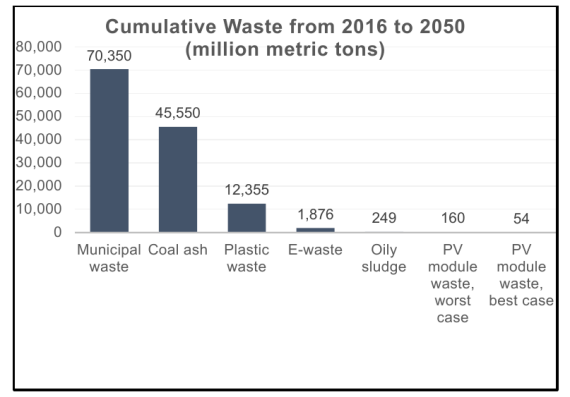 Arguments
Arguments
 Software
Software
 Resources
Comments
Resources
Comments
 The Consensus Project
The Consensus Project
 Translations
Translations
 About
Support
About
Support


Latest Posts
- Zeke's 2026 and 2027 global temperature forecasts
- 2025 SkS Weekly Climate Change & Global Warming News Roundup #51
- Skeptical Science New Research for Week #51 2025
- What are the causes of recent record-high global temperatures?
- Fact brief - Are toxic heavy metals from solar panels posing a threat to human health?
- Emergence vs Detection & Attribution
- 2025 SkS Weekly Climate Change & Global Warming News Roundup #50
- Skeptical Science New Research for Week #50 2025
- The rest of the world is lapping the U.S. in the EV race
- Fact brief - Are electromagnetic fields from solar farms harmful to human health?
- Comparing climate models with observations
- 2025 SkS Weekly Climate Change & Global Warming News Roundup #49
- Skeptical Science New Research for Week #49 2025
- Climate Adam & Dr Gilbz - Paris Climate Agreement At 10: Did It Do Anything?
- Fact brief - Does the recent slowdown in Arctic sea-ice extent loss disprove human-caused warming?
- Why the chemtrail conspiracy theory lingers and grows – and why Tucker Carlson is talking about it
- 2025 SkS Weekly Climate Change & Global Warming News Roundup #48
- Skeptical Science New Research for Week #48 2025
- Consensus machines
- Just have a Think - How an African energy revolution could save ALL of us.
- A girl’s grades drop every summer. There’s an alarming explanation.
- 2025 SkS Weekly Climate Change & Global Warming News Roundup #47
- Fact brief - Are changes in solar activity causing climate change?
- Skeptical Science New Research for Week #47 2025
- Exploring newly released estimates of current policy warming
- Climate Adam - Why the Climate Crisis is a Health Crisis
- Super pollutants are trendy, but we should be careful how we use them
- 2025 SkS Weekly Climate Change & Global Warming News Roundup #46
- Skeptical Science New Research for Week #46 2025
- On the Gates climate memo
Archived Rebuttal
This is the archived Intermediate rebuttal to the climate myth "Solar panels generate too much waste and will overwhelm landfills". Click here to view the latest rebuttal.
What the science says...
|
Waste from solar panels is trivial compared to the waste generated by fossil fuels, with coal ash generating 300-800 times more waste, and oily sludge generating 2-5 times more waste than PVs. |
The amount of waste that solar panels are expected to generate over the next few decades is trivial compared to the amount of waste that will be generated by fossil fuels. A study published in Nature Physics in October 2023 found that “35 years of cumulative PV module waste (2016-2050) is dwarfed by the waste generated by fossil fuel energy and other common waste streams.” Specifically, the study found that “if we do not decarbonize and transition to renewable energy sources, coal ash and oily sludge waste generated by fossil fuel energy would be 300-800 times and 2-5 times larger [in mass], respectively, than PV module waste.”1
Figure 1: PV module waste from 2016-2050 compared to other sources of waste. Source: The Sabin Center for Climate Change Law (visualizing data from Heather Mirletz et al. 2023).
In addition, although only about 10% to 15% of solar panels are recycled in the United States2, the U.S. Department of Energy has awarded funding under the Infrastructure Investment and Jobs Act for additional research and development for solar technology recycling.3 A 2024 study on solar PV recycling concluded that “PV recycling will reduce waste, and CO2 emissions, while contributing to a sustainable environment,” and that “[i]t is expected that the research for efficient PV recycling strategies will accelerate as the PV industry grows and as many more organizations and government work towards a sustainable future.” (Ngagoum Ndalloka et al. 2024)
Already, some companies have been able to recover 90% of solar panels’ mass in their recycling processes (Aman et al. 2015). One commercial recycling plant in France can recycle more than 95% of a solar module (Deng et al. 2022). Bulk materials such as glass, steel, and aluminum are recoverable through existing recycling lines4 (Heath et al. 2020), while certain semiconductor materials (tellurium and cadmium) can also be recovered at very high rates of 95% to 97% (Chowdhury et al. 2020). Valuable materials in the panels, including silver, copper, and crystalline silicon, are actively sought for the development of other products, including the next generation of solar panels.5 In addition, new companies are emerging with innovative technologies to recycle solar panels.
Footnotes:
[1] Heather Mirletz et al., Unfounded concerns about photovoltaic module toxicity and waste are slowing decarbonization, Nature Physics (October 2023).
[2] Allyson Chu, Scientists found a solution to recycle solar panels in your kitchen, Wash. Post (Jul. 5, 2023)
[3] Solar Recycling Research & Development, Office of Energy Efficiency & Renewable Energy, Dep’t of Energy (last visited March 26, 2024).
[4] U.S. Dep’t of Energy, Office of Energy Efficiency & Renewable Energy, Solar Energy Technologies Office, Photovoltaics End-of-Life Action Plan 11 (2022)
[5] Jon Hurdle, As Millions of Solar Panels Age Out, Recyclers Hope to Cash In, Yale Env’t. 360 (Feb. 28, 2023)
This rebuttal is based on the report "Rebutting 33 False Claims About Solar, Wind, and Electric Vehicles" written by Matthew Eisenson, Jacob Elkin, Andy Fitch, Matthew Ard, Kaya Sittinger & Samuel Lavine and published by the Sabin Center for Climate Change Law at Columbia Law School in 2024. Skeptical Science sincerely appreciates Sabin Center's generosity in collaborating with us to make this information available as widely as possible.
Updated on 2024-10-26 by Sabin Center Team.
THE ESCALATOR

(free to republish)

























































